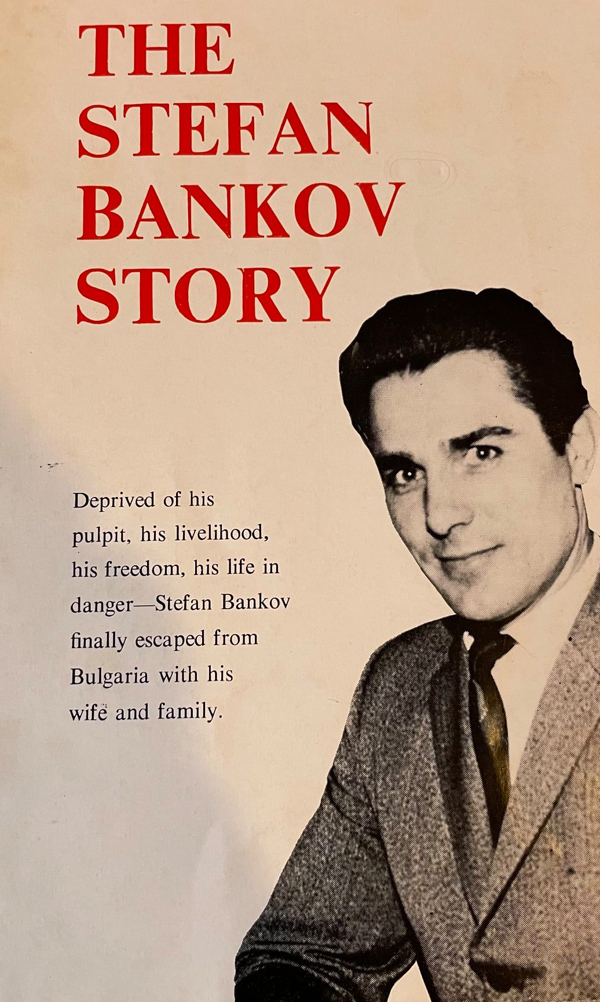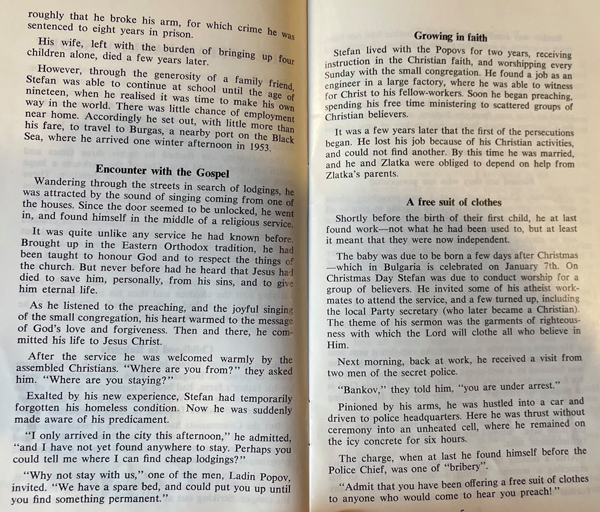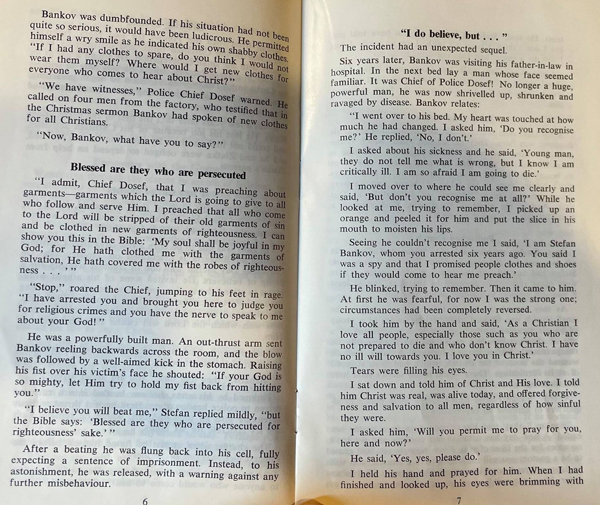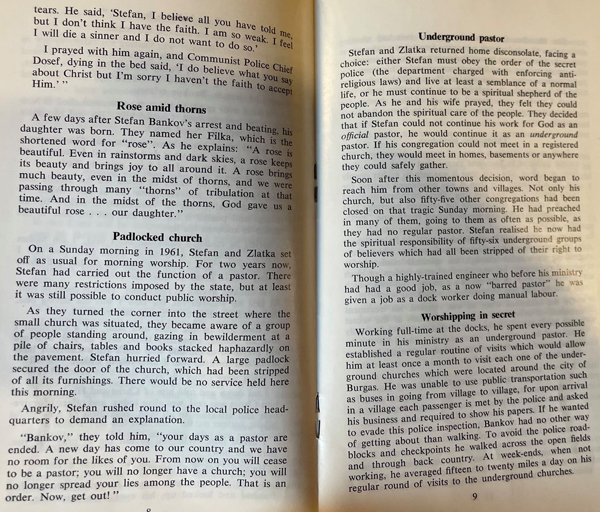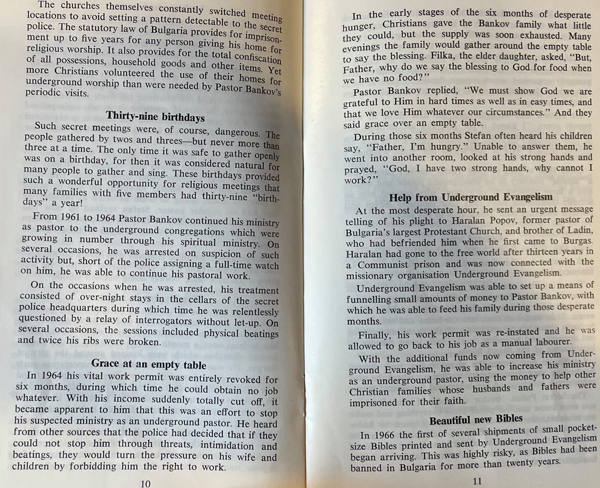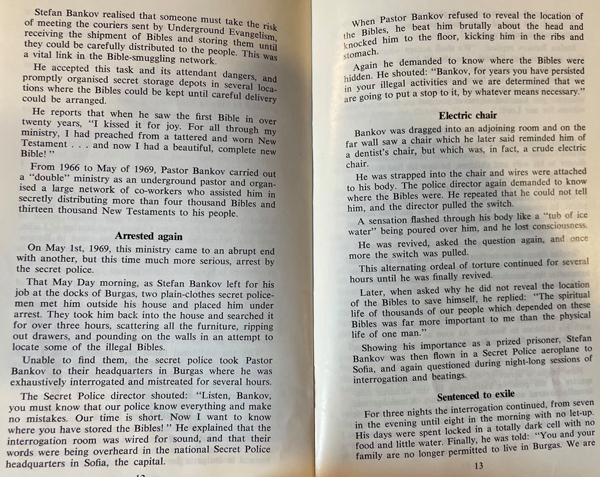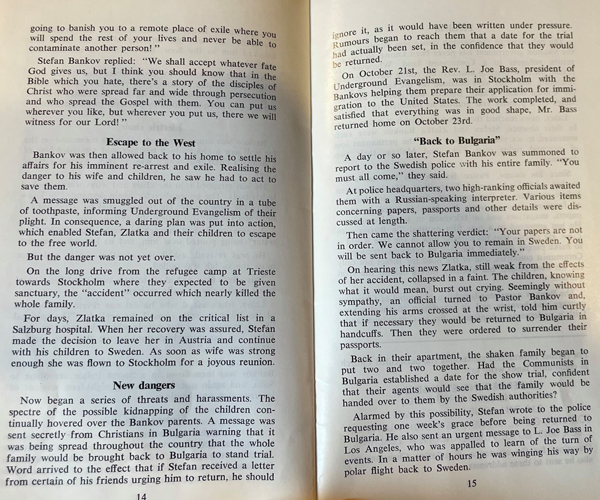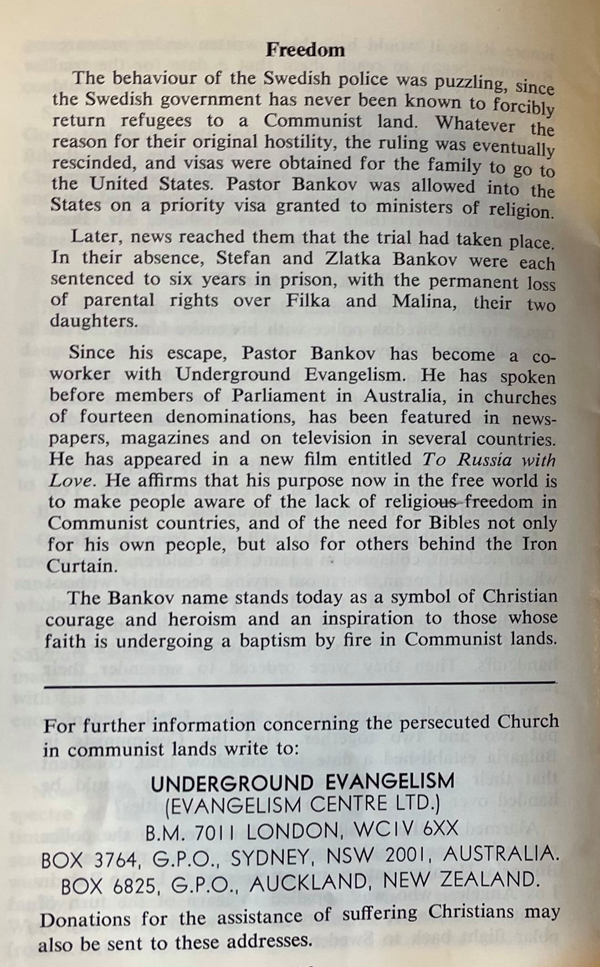How a Small Ocoee Flower Shares a Big Story
by Kathryn DONEV
With VBS season upon us, we are always looking for inventive ways of sharing the Gospel with our little ones. We are internally motivated by the Biblical mandate of Proverbs 22:6. When we start children off on the way they should go, even when they are old they will not turn from it. So this summer let us shift focus from the Corona Virus to the Corona Filaments of a small plant that tells a big story.
When Spanish Christian missionaries arrived in the jungle of Brazil in the 16th century, they discovered a plant with such beauty and distinctiveness unlike any they had seen before. These explores were encouraged feeling it was a good sign for their mission. After closely observing the structure of the plant’s bloom, they called it the passion flower because to them it symbolized the passion or death of Christ.
This exotic flower (Passiflora Incarnata) grows wild in South America and the southern United States as well. Beginning around June is when you first see the vine emerge from the grown after laying dominate all winter. It is the official state wildflower of Tennessee and is sometimes know as the maypop (term given by the Powhatan Indians), wild apricot, Holy Trinity flower and the ocoee. The Cherokee were the ones to referred to the passion vine as “u-wa-go-hi” or “ocoee”. The root “oco” refers to the plant and “ee” describes location. The word “ocoee” literally means the apricot vine place. The passion flower was considered to be the most beautiful of all flowers among the Cherokee and to this day it is a revered piece of their heritage.
Here’s how a small flower turned to be the center stage of the story of Christ’s ultimate sacrifice.
The passion flower is a strong plant that is resistant to pulling and bending as was Christ who endured the horrific pain of a crucifixion. The radial corona filaments of the flower represent the woven crown of thorns which mocked Christ’s claim of authority. This corona rests upon a cup-shaped structure that reminds of the cup of suffering and the Last Supper. The spiraled tendons of the plant are symbols of the lashes Christ endured and the flower’s trailing tendrils are like the whips. The central flower column receptacle is symbolic of the pillar of Christ’s scourging. The three stigmas are symbols of the nails used in the crucifixion as well as the Holy Trinity. The five anthers remind us of the five piercing wounds Christ suffered. Together the five petals and five sepals refer to the ten disciples who did not betray or deny Jesus. The palmate leaves depict the hands of His persecutors or the Holy lance that pierced Christ’s side. The fragrance of the flower helps us recall the spices used in the burial cloth for the body of Christ. The purple color is symbolic of royalty, the white is for purity. The shape of its fruit is symbolic of the world that Christ saved through his suffering. Finally, because the passion flower is a vine it points to Heaven and will compete with surrounding trees to see the light.
The Story of the 1896 Shearer Schoolhouse Revival at Barney Creek
Schearer Schoolhouse revival
In 1896, a revival was begun in a little schoolhouse near Murphy, North Carolina. Strong opposition to it arose almost immediately. When opponents of the revival tried to stop it violently, the people who lived in the humble home shown below, gave it protection. They had no way of knowing that the revival they protected, would bear the fruit of 15,000 churches being started around the world in the 100 years that followed.
When unknown & unheralded preachers, connected to the Fire-Baptized Holiness Association, William Martin, a Methodist preacher, Joe M. Tipton and Milton McNabb, members of the Baptist church, walked from their homes in Monroe County, TN to begin a revival at the Schearer Schoolhouse in Murphy County, North Carolina, they had no way of knowing that what would happen there would still be blessing people a hundred years later. Possibly as you read this true story, you may labor in a place that seems isolated or far removed from the light of recognition and popularity, but what you do faithfully day by day, is planting seed now that will rise up as blessings throughout the years to come. As the song says, “Little is much when God is in it.” Martin, Tipton and McNabb (to our knowledge there are no photos of them) began the revival with one motive, to share Christ with anyone who would listen so their neighbors to spend eternity in hell.
Though they preached simple sermons about Christ and living a holy life, all during the spring of 1896 and on into the summer, amazing and phenomenal Holy Spirit motivated events took place at the Schoolhouse revival. If someone had asked them what a “Pentecostal” was or how to be one, probably nobody there could have answered the question. They were Baptists, Methodists and prossibly a few Presbyterians attending the schoolhouse revival meetings. Once again, the Holy Spirit demonstrated that He moves where He wants upon the hearts that He chooses, regardless the person’s denominational membership or background.
DENOMINATIONAL MEN OPPOSED THEM
This is not intended to be against denominations. Much can be accomplished when people unite their efforts for spreading the Gospel. We should remember that what happened at the Schearer Schoolhouse, put them in direct conflict with their denominations. It was denominational men who opposed them. The disciples also had that conflict when they were before their organization’s Council, they said, ‘”We would obey God rather than man.”
Charles W. Conn, Church Historian for the Church of God and author of “Like A Mighty Army,” says that over 100 people received what is now referred to as “The Baptism of the Holy Spirit” at the Schearer Schoolhouse revival. That’s a big crowd when one considers the population was very sparse (it’s not too crowded in that area even today). Conn’s historical account says, “They laughed (interesting), rejoiced, praised, spoke in tongues and danced for joy.”
It is believed the Schearer Schoolhouse revival was the first time a group of people had received such blessings anywhere on this side of the Atlantic ocean. There had been scattered reports of individuals, some in the NY meetings held by Phoebe Palmer, that had experienced what people now call “speaking in tongues.”
C.T. Davidson, author of “Upon This Rock,” wrote this description. “In buggies and wagons, by horseback and walking, people came from miles around. The lives of hardhearted men and women were changed and sinners were constrained to make restitution as they sought forgiveness.” Davidson continued, “While many were blessed, others rejected the revival because it conflicted with their rituals, creeds and ecclesiasticism. Many faithful members were persecuted and excommunicated. One church excommunicated 30 of them at one meeting.”
Persecution became so intense until the revival was moved a short distance to a more secure log building. Some accounts say the sheriff, local ministers who opposed the revival and a mob of supporters, tore the building down log by log, piled them up and burned them. Without a place to worship, the meetings were finally moved to the tiny home of W.F. Bryant, a respected Christian leader in the community. Opponents came to his house and demanded that the meetings stop. They showered the home with stones and bullets but W.F. Bryant wouldn’t back down. Those who had received the blessings at the revival, began to believe then, as most Pentecostals do today, that what was happening among them first occurred in the Upper Room on the day of Pentecost and was a continuation of what happened there (The fifth book of the New Testament; Acts, Chapters 1 & 2).
Described by Charles W. Conn as pivotal to Church of God formation, a 1896 revival in Cherokee County, North Carolina provoked charismatic phenomena now familiar in pentecostal circles. (1) It is known that the primary evangelists–Martin, Tipton, and McNabb–were connected to the Fire-Baptized Holiness Association. In view of the imposing number of instances of tongues-speech spread throughout nineteenth century North America, (2) the well-traveled reports of such activities in certain circles and especially the presence of Daniel Awrey at Beniah, Tennessee, it seems reasonable to suggest the possibility that William Martin, Joe Tipton, and/or Milton McNabb were exposed to at least stories about tongues-speech before the 1896 revival. (3)
1. Charles W. Conn, Our First 100 Years: 1886-1986 (Cleveland: Pathway Press, 1986) 17, goes on to ascribe importance to the event because it “prepared the way for the universal outpouring that followed ten years later.” This is a welcome appraisal in light of an earlier judgment often bound up in the North American church’s self-perception, namely [Charles W. Conn, Like A Mighty Army (Cleveland: Pathway Press, 1977) 25]: “… this was the first general outpouring that would continue unabated until it encompassed the Christian world.” Cf. Charles W. Conn, Like A Mighty Army: A History of the Church of God: Definitive Edition, 1886-1995 (Cleveland: Pathway Press, 1996) 29-31. The re-evaluation process can be followed in Charles W. Conn, Cradle of Pentecost (Cleveland: Pathway, 1981) 17, “If it was not the beginning of the modern Pentecostal Awakening, it was certainly the greatest prelude to it.” Then “Church of God” by Charles W. Conn in Encyclopedia of Religion in the South, ed. by Samuel S. Hill (Macon: Mercer University Press, 1984) 160, calls this an “extraordinary event” “without precedent in the region.” On the other hand, Conn’s entry in the same volume on “A.J. Tomlinson,” repeats the older view espoused in Army. Conn’s piece on the revival in DPCM, 161, says the group “formulated no doctrine about it. They simply thanked God for the ‘blessing’ …” He opens the article by calling this “one of the earliest known outpourings of the Holy Spirit in America” in contrast to the closing statement that the “universal outpouring would begin ten years later, 1906, in far away California.” cf. E.L. Simmons, History of the Church of God (Cleveland: Church of God Publishing House, 1938) 11f; Crews, The Church of God, 10.
The official Church of God position seems entrenched in the earlier Conn view. During the 1995 Pentecostal World Conference in Jerusalem, Church of God started a celebration of their 100 years of pentecostal revival. This was to have culminated in the 1996 General Assembly of the Church of God. Meanwhile, this viewpoint continued to play a factor in the view expressed in the 1990’s Church of God web page (http://www.mindspring.com/~cog/cog.html) which originally trumpeted “America’s Oldest Pentecostal Church” then replaced with the equally loud “America’s First Pentecostal Church.”
Contrast this to the 2001 celebration in Los Angles of the birth of Pentecostism hosted by the Pentecostal World Conference, noting the planning began while the PWC was led by Dr. Ray H. Hughes of the Church of God. The Pentecostal Charismatic Churches of North America (PCCNA) signed on as partners and the North American Renewal Service Committee (NARSC) endorsed the event as an effort to celebrate all the offspring of the pentecostal revival.
2. Assemblies of God Heritage has analyzed several such examples like that of W. Jethro Walthall. See Glenn Gohr, “William Jethro Walthall and the Holiness Baptist Churches of Southwestern Arkansas,” Assemblies of God Heritage 12:3 (Fall 1992) 19f. Also: Mary Woodworth Etter, Signs and Wonders God Wrought in the Ministry for Forty Years (Indianapolis, 1916) 117; Wayne E. Warner, The Woman Evangelist (Metuchen: Scarecrow, 1986) 70n33; Brumback, Suddenly, 13; Kendrick, Promise, 35; Frodsham, Signs, 11-17; Cyril Williams, Tongues, 50; Bresson, Ecstasy, 109; Worsfold, Charismatic, 82; Lewi Pethrus, A Spiritual Memoir (Plainfield: Logos, 1973) 20; Aimee Semple McPherson, Lost and Restored as cited by Robert Cornwall, “Primitivism and the Redefinition of Dispensationalism in the Theology of Aimee Semple McPherson,” Pneuma 14:1 (Spring 1992) 37; A.M. Kiergan, Historical Sketches of the Revival of True Holiness and Local Church Polity from 1865-1916 (Fort Scott: Church Advocate and Good Way, 1971) 31; Davidson, Rock 1:298; C.E. Jones, “Tongues-Speaking and The Wesleyan-Holiness Question for Assurance of Sanctification,” Wesleyan Theological Journal 22:2 (Fall 1989) 120.
3. “History of Pentecost,” The Faithful Standard 1:6 (September 1922) 6, noted William Hamby as the fourth evangelist. Also Nettie Bryant, Interview p. 2, and W.F. Bryant, Interview p. 2. R.G. Spurling, Jr., married Barbara Hamby in 1876. So McCauley, “Appalachian Mountain Religion,” 360.
How a Small Ocoee Flower Shares a Big Story
by Kathryn DONEV
With VBS season upon us, we are always looking for inventive ways of sharing the Gospel with our little ones. We are internally motivated by the Biblical mandate of Proverbs 22:6. When we start children off on the way they should go, even when they are old they will not turn from it. So this summer let us shift focus from the Corona Virus to the Corona Filaments of a small plant that tells a big story.
When Spanish Christian missionaries arrived in the jungle of Brazil in the 16th century, they discovered a plant with such beauty and distinctiveness unlike any they had seen before. These explores were encouraged feeling it was a good sign for their mission. After closely observing the structure of the plant’s bloom, they called it the passion flower because to them it symbolized the passion or death of Christ.
This exotic flower (Passiflora Incarnata) grows wild in South America and the southern United States as well. Beginning around June is when you first see the vine emerge from the grown after laying dominate all winter. It is the official state wildflower of Tennessee and is sometimes know as the maypop (term given by the Powhatan Indians), wild apricot, Holy Trinity flower and the ocoee. The Cherokee were the ones to referred to the passion vine as “u-wa-go-hi” or “ocoee”. The root “oco” refers to the plant and “ee” describes location. The word “ocoee” literally means the apricot vine place. The passion flower was considered to be the most beautiful of all flowers among the Cherokee and to this day it is a revered piece of their heritage.
Here’s how a small flower turned to be the center stage of the story of Christ’s ultimate sacrifice.
The passion flower is a strong plant that is resistant to pulling and bending as was Christ who endured the horrific pain of a crucifixion. The radial corona filaments of the flower represent the woven crown of thorns which mocked Christ’s claim of authority. This corona rests upon a cup-shaped structure that reminds of the cup of suffering and the Last Supper. The spiraled tendons of the plant are symbols of the lashes Christ endured and the flower’s trailing tendrils are like the whips. The central flower column receptacle is symbolic of the pillar of Christ’s scourging. The three stigmas are symbols of the nails used in the crucifixion as well as the Holy Trinity. The five anthers remind us of the five piercing wounds Christ suffered. Together the five petals and five sepals refer to the ten disciples who did not betray or deny Jesus. The palmate leaves depict the hands of His persecutors or the Holy lance that pierced Christ’s side. The fragrance of the flower helps us recall the spices used in the burial cloth for the body of Christ. The purple color is symbolic of royalty, the white is for purity. The shape of its fruit is symbolic of the world that Christ saved through his suffering. Finally, because the passion flower is a vine it points to Heaven and will compete with surrounding trees to see the light.
THE STEFAN BANKOV STORY
October 25, 2021 by Cup&Cross
Filed under Featured, Missions, News, Publication
One of them was Dr. Stefan Bankov, perhaps the immigrant with greatest influence for the Bulgarian Protestant scholasticism. Immigrating to the United States in 1969 after being severely persecuted in Bulgaria, Bankov earned a doctoral degree in theology and dedicated his life to one great purpose, namely the preparation of the first concordance of the Bulgarian Bible. The concordance was completed in 1986 before the era of the personal computer. After the fall of the Berlin Wall, Bankov returned to Bulgaria to work with his home church of Bourgas. He is the founder and president of East-West Christian Solidarity, a nonprofit religious organization based in California which aims to provide Christ-centered evangelism, preaching, teaching, and humanitarian for Bulgaria.
Christmas: A story about a Middle Eastern family seeking refuge
The Story of the Bulgarian Bible (video)
The (un)Forgotten: The Story of Rev. Ivan Voronaev’s Children
![51Sa1IcA8OL._SY344_PJlook-inside-v2,TopRight,1,0_SH20_BO1,204,203,200_[1]](https://cupandcross.com/wp-content/uploads/2014/03/51Sa1IcA8OL._SY344_PJlook-inside-v2TopRight10_SH20_BO1204203200_1.jpg) The (un)Forgotten: Story of the Voronaev Children
The (un)Forgotten: Story of the Voronaev Children
Missions & Intercultural Studies
Dony K. Donev, D. Min.
Cup & Cross Ministries International
Presented at the 40th Annual Meeting of the Society for Pentecostal Studies
Our presentation at the 2010 SPS meeting in Minneapolis opened a door for discussion of early missionaries to Eastern Europe with a special focus on Rev. Ivan Voronaev. But the story and ministry of Rev. Ivan Voronaev cannot be separated from his main supporter and partner in the ministry – his wife and children.
During the time of original research, it became obvious that Ivan Voronaev was successful in the ministry both in the United States and Europe only through the obedience of his family. They followed his call for missions, leaving behind the comfort of life in America. The Voronaevs sacrificed the future of their children for the unknown reality of Russia’s greatest depression. The strive for survival followed the imprisonment of both parents along with the virtually impossible task to re-immigrate from Russia and reunite in the United States, and the constant struggle to save their parents from certain death in Stalin’s consecration camps even when all hope was lost.
The Voronaevs’ story presents an early historical case study on Pentecostal missionaries and their children, not only as second generation believers, but as second generation Pentecostal immigrants as well. This example is particularly interesting since it combines both mission and immigration, as integral parts of the Pentecostal identity at the dawn of the movement. To add to this there is the relationship between missionary families and the mission-sending agency, on this occasion being the Missions Department of the Assemblies of God and in part the Russian Evangelical Diaspora.
In this context, the research on the Voronaev family has three distinct parts: (1) life in Russia and the imprisonment of the parents, Ivan and Katherine Voronaev, (2) back to America under the care of Assemblies of God Missions’ Department and (3) and the after years, with a special focus on the life and ministry of the oldest of the Voronaev’s children, Paul.
The research will utilize the available archive information at the Assemblies of God archives in Springfield, MO, as well as some Russian library material from Moscow and Kiev, which have become available after the presentation of our 2010 Voronaev paper. Special attention will be given to Paul Voronaev’s personal correspondence after his return to the United States and subsequent papers, relative to the story of the Voronaev’s children, published by him in later years. As Rev. Ivan Voronaev’s personal end is yet unknown, it is our hope that story of the Voronaev children, will provide a much needed closure to the life and ministry of one of the earliest Eastern European missionaries in Pentecostal history.
San Francisco Springs: A Story of Two Churches
 Several years ago, while visiting San Francisco on our way to preach at the Bulgarian church in Las Vegas, we were completing our research on Ivan Voronaev’s biography at Berkeley, who studied there after his arrival to the States in the 1912.
Several years ago, while visiting San Francisco on our way to preach at the Bulgarian church in Las Vegas, we were completing our research on Ivan Voronaev’s biography at Berkeley, who studied there after his arrival to the States in the 1912.
While there, we decided to call a high school friend who lives and works in the area. He had moved to the States in 1998 while I was working in D.C. We tried to keep in touch since then, but I had not seen him for years. And with all our travels it had never worked out to cross paths.
So early one morning that same week, we were having coffee at Starbucks near San Rafael. He shared some of his experience as an immigrant, about his family spread thin between here and Bulgaria and about his brother who had just moved for work to Phoenix.
I’ve already written about these events with more detail in “Finding Friends in Phoenix or the Story of an Arizona State Quarter”. In short, this is how the idea for twin Bulgarian churches in San Francisco and Phoenix was born in the spring of 2009.
Today, when this dream of two churches is so close to become a reality, I look at this rather incidental and spontaneous meeting and wonder. If God can bring two old friends to start two new churches, what else does He have stored for us in the future?
New Voices from the Past: The Untold Story of the Life and Ministry of Rev. Ivan Voronaev
![51Sa1IcA8OL._SY344_PJlook-inside-v2,TopRight,1,0_SH20_BO1,204,203,200_[1]](https://cupandcross.com/wp-content/uploads/2014/03/51Sa1IcA8OL._SY344_PJlook-inside-v2TopRight10_SH20_BO1204203200_1.jpg) New Voices from the Past: The Untold Story of the Life and Ministry of Rev. Ivan Voronaev
New Voices from the Past: The Untold Story of the Life and Ministry of Rev. Ivan Voronaev
Missions & Intercultural Studies
Dony K. Donev, D. Min.
Cup & Cross Ministries International
Presented at the 38th Annual Meeting of the Society for Pentecostal Studies
The name Ivan Efimovich Voronaev is of a central importance for the development of Pentecostalism in Communist Russia and its Eastern European satellites. Voronaev was saved in his early life in Russia and then became a powerful Baptist minister, but after being persecuted for preaching the Gospel, in 1912 he immigrated with his family through Japan to the United States. Voronaev’s ministry touched both Baptist and Pentecostal churches from California and Washington to New York and Connecticut, before he undertook the difficult journey across the Atlantic, through Constantinople and Bulgaria to reach his native land. Voronaev established Pentecostal churches along the way laying the foundation of Pentecostalism in Eastern Europe. Although his story has been told many times, very little has been documented about his early ministry before he converted to Pentecostalism and launched what would become an international Pentecostal campaign reaching people from Seattle to Siberia (going eastbound). This present study reviews Voronaev’s ministry based on documents from the early period of his life, examining his connections with Baptist and Assemblies of God denominations in the United States. It then presents information about his mission trip to Eastern Europe, with a special focus on his stay in Bulgaria and the foundation of his work in Russia. But long before finding his place in the ministry, the story of Ivan Voronaev begins with his personal quest for identity in ministry, beginning with a search for a name…
(un)Forgotten Story of the Voronaev Children
For if history indeed forms our identity, we are left without identity once we forget our history. Yes, we still have feature ahead of us, but it is disconnected from our past and from our experience. It is disconnected from our identity and from our story. We still have a future when we forget our history, but it is not our future – it is someone else’s. It is the future someone else wants us to have…



